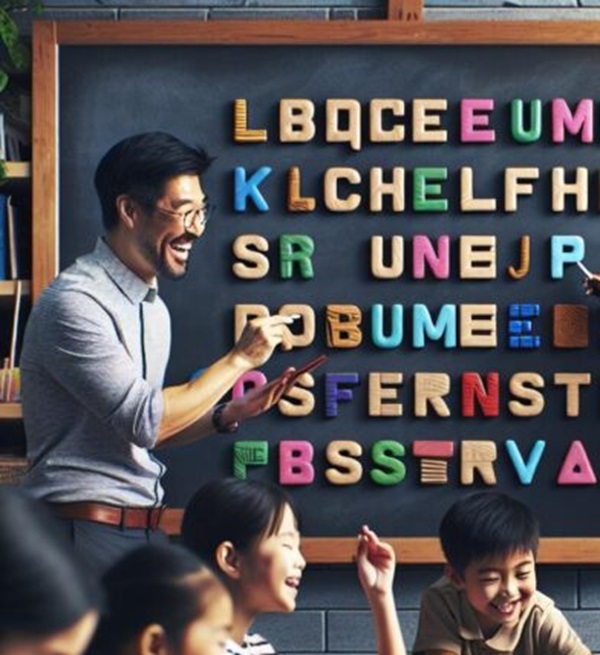
Multisyllabic words can often be intimidating for young learners, but with the right activities and strategies, teaching them can be fun and interactive. Educators and parents can use a variety of engaging methods to help children master multisyllabic words, ultimately building their confidence and reading skills. In this article, we’ll explore some creative and effective ways to teach multisyllabic words, making the learning process enjoyable for kids.
1. Word Building Games
Word building games are a great way to engage children in learning multisyllabic words. One popular game is Scrabble, where kids can form longer words by combining smaller ones. Additionally, activities like Boggle or Bananagrams can help children practice blending sounds and syllables to create multisyllabic words. By incorporating these games into the learning process, children can have fun while developing their phonemic awareness and vocabulary skills.
2. Syllable Segmentation
Syllable segmentation is an effective strategy for teaching multisyllabic words. Breaking down words into syllables helps children understand the structure and pronunciation of longer words. Teachers and parents can use manipulatives such as counters or syllable cards to demonstrate how to segment multisyllabic words. Additionally, clapping or stomping the syllables of a word can make the process interactive and engaging for kids. This hands-on approach allows children to actively participate in the learning process, leading to better retention and understanding of multisyllabic words.
3. Word Chunking
Teaching children to recognize word chunks or patterns within multisyllabic words can help them decode and understand longer words more easily. Educators can create word chunk cards with common prefixes, suffixes, and root words, and ask children to combine them to form multisyllabic words. By identifying and practicing word chunks, children can become more adept at recognizing and decoding complex words, improving their reading fluency and comprehension.
4. Picture Word Match
Using visual aids is a powerful teaching tool, especially for young learners. Educators and parents can create picture word cards with multisyllabic words and corresponding images. Children can then match the words to the pictures, reinforcing their understanding of the words and their meanings. This activity not only enhances vocabulary and word recognition, but also makes learning multisyllabic words more enjoyable and memorable for kids.
5. Storytelling
Storytelling is a versatile and entertaining way to introduce and reinforce multisyllabic words. Educators can use picture books or create their own stories featuring multisyllabic words. As children listen to the stories, they can actively participate by identifying and discussing the multisyllabic words found in the text. Additionally, educators can ask children to retell the stories, incorporating the multisyllabic words they have learned. This interactive approach to storytelling can help children develop their language skills while engaging their imaginations.
6. Word Puzzles and Crossword
Word puzzles and crosswords can be used to teach and reinforce multisyllabic words in a playful manner. Educators can design puzzles and crosswords with multisyllabic words, providing children with clues to help them identify and complete the words. This activity encourages critical thinking and problem-solving skills, while also expanding children’s vocabulary and word recognition. By incorporating puzzles and crosswords into the learning process, children can have fun while mastering multisyllabic words.
7. Rhyming Games
Rhyming games are a fun and effective way to help children recognize and produce multisyllabic words. Educators can engage children in activities such as rhyming word matching or creating rhyming word families with multisyllabic words. By focusing on rhyming patterns and sounds, children can become more proficient at identifying and manipulating multisyllabic words, enhancing their phonological awareness and literacy skills. This interactive approach to rhyming can make learning multisyllabic words enjoyable and engaging for kids.
8. Word Hunts
Word hunts are a dynamic and hands-on activity that allows children to actively search for multisyllabic words in their environment. Educators can create word hunt lists with multisyllabic words for children to find in books, magazines, or around the classroom. As children discover the words, they can write them down and discuss their meanings and pronunciations. This activity not only helps children practice reading and decoding multisyllabic words, but also encourages them to actively engage with language in their surroundings.
In conclusion, teaching multisyllabic words in fun and interactive ways is essential for engaging young learners and helping them develop their reading and language skills. By incorporating engaging activities such as word building games, syllable segmentation, word chunking, picture word match, storytelling, word puzzles, rhyming games, and word hunts, educators and parents can make the learning process enjoyable while equipping children with the tools to master multisyllabic words. With the right strategies and activities, children can build confidence and proficiency in reading and understanding multisyllabic words, ultimately fostering a love for language and literacy.


















